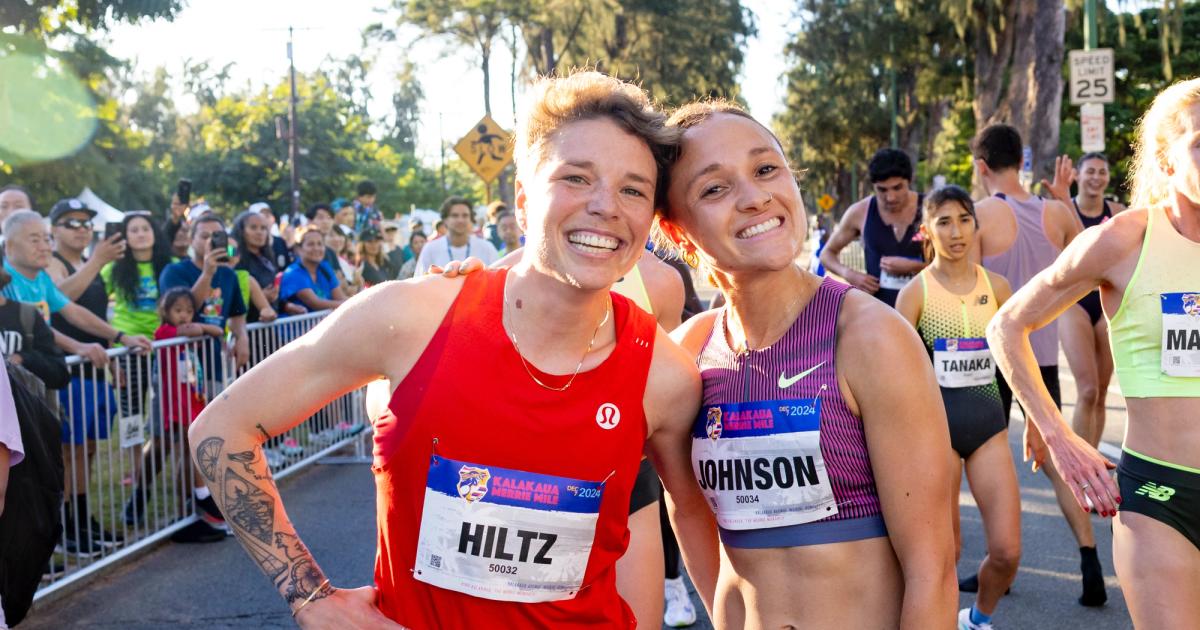By Paul Snyder
October 29, 2025
Early this week, World Athletics announced that next year it will partner with a major gym equipment company on a global event to crown the world’s best treadmill runners. The press conference featured a cheesing Jimmy Gressier, flanked by Seb Coe and Technogym’s CEO, and included a statement that leaned heavily into the phrases “virtual community” and “revolutionize the world of e-sports.” It’s hard to relay this information without it sounding grim, while it’s easy to ask questions like “why are they doing this?” and “who is this for?”
Now this week’s Hater’s Zone isn’t intended to knock the concept of treadmill running. For plenty of runners—novice and experienced—it’s an essential tool that enables safer or more convenient training. But for the majority of those runners slogging away on the ‘mill, it’s probably not their first choice of training venue. The various knock-on effects of going for a run outdoors (seeing cool stuff, breathing fresh air, chatting with a friend) are ultimately the elements of our sport that wind up romanticized and centered as why we run. While it’s possible to experience a variation of those themes—you can watch a movie; turn on the air purifier in your basement; text that same friend—while trotting along in place, that visual probably doesn’t inspire you to lace up the trainers. Heck, we’re not even necessarily against the idea of treadmill racing—the virtual stationary bike race scene is, for better or worse, a thriving one—but is this the best use of World Athletics’s time and energy?
Professional sports are about entertainment and escapism. The roar of the crowd. The scale of the venue. The unpredictable interactions between the world’s best vying for the same elusive victory. The concept of the World Championship 10,000m gold medalist running a 13:00 5k on a treadmill lacks all of that. It’s just an elite athlete mirroring a normal person’s mundane reality back to them, only better. It’d be like Joey Chestnut coming over for dinner, and unceremoniously devouring all the leftovers in your fridge in 15 seconds. It’d read more as revolting than remarkable. Impressive things tend to present way better in an impressive context.
Maybe this isn’t a pure entertainment play. Let’s take Seb Coe at his jargony word and assume World Athletics truly is trying to cultivate a virtual community. Virtual communities exist! They’re real things! Even within the world of running. Look at Strava! Look at YouTube, or even the dreaded message boards. There’s nothing wrong with a virtual community when it’s rooted in something real—communal experiences, new adventures, or seeing a world that’s not your own.
Even if most of our readers aren’t big fans of the concept of e-sports, maybe some of you are. Millions of people’s favorite pastime is watching a stranger stream themselves playing a videogame, after all. But inherent in the escapism of video games—which might feature things like aliens and gratuitous violence—is the ability to bring fantasy to life. Simply approximating something very achievable indoors, like running a 5k, doesn’t exactly boggle the imagination.
Sure, there’s some precedent in cycling and rowing for mildly successful virtual racing events, but there’s no precedent for professional, championship-style e-racing to move the needle against, y’know, actual sports. When Zwift is putting up comparable viewing numbers to the Tour de France, maybe it’s worth revisiting. Until then, this announcement lands as both an attempt at a cynical cash grab and a classic case of a governing body spending a lot of resources on trying to magick a new trend into existence rather than improving its existing product.
If the problem is that we need new, exciting ideas to make running cool, why don’t we instead take on other parts of our sport that could theoretically be packaged into something more interesting for fans and fun for athletes, like adapting the increasingly popular trend of “unsactioned” underground races for high levels. Why not host a race from one side of Paris to the other with no official course? Or a Speed Project-style relay featuring Japan’s best Ekiden runners against a European all-star squad? If for no other reason than visuals, wouldn’t it be neater to watch a small field of professional athletes dart around a bustling cityscape while partaking in some high-speed urban orienteering?
Heck, you could even take the exact premise of the treadmill championship and simply take it outside. In the early days of the pandemic in 2020, race cancellations and social-distancing requirements forced the running community to get creative with its competitive outlets, leading to new races like Trials of Miles’s “Survival of the Fastest” bracket. What if every country got to send a team to a road 5k course of its own choosing and time-trial against every other nation with the added challenge of designing the fastest possible loop? Jakob Ingebrigtsen and Yared Nuguse basically raced head-to-head on opposite sides of the Atlantic with their respective indoor mile world records earlier this year—why not make a challenge like that official?
Creativity and innovation are good for the sport. But change for its own sake can be wasteful and no more interesting than the status quo. If we’re going to introduce a whole new “World Championship” format, let’s invest the thoughtfulness needed to get it right, not just get it out there.

Paul Snyder
Paul Snyder is the 2009 UIL District 26-5A boys 1600m runner-up. You can follow him on Bluesky @snuder.bsky.social.




